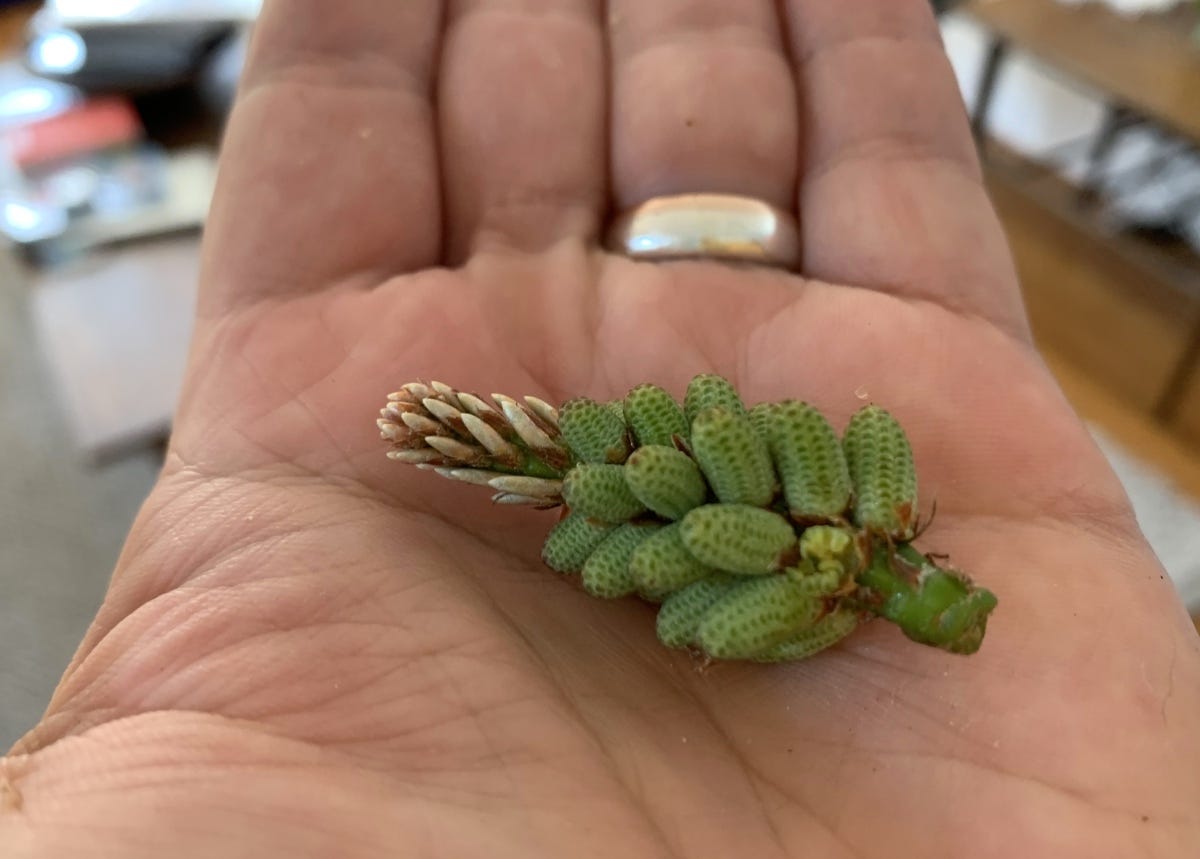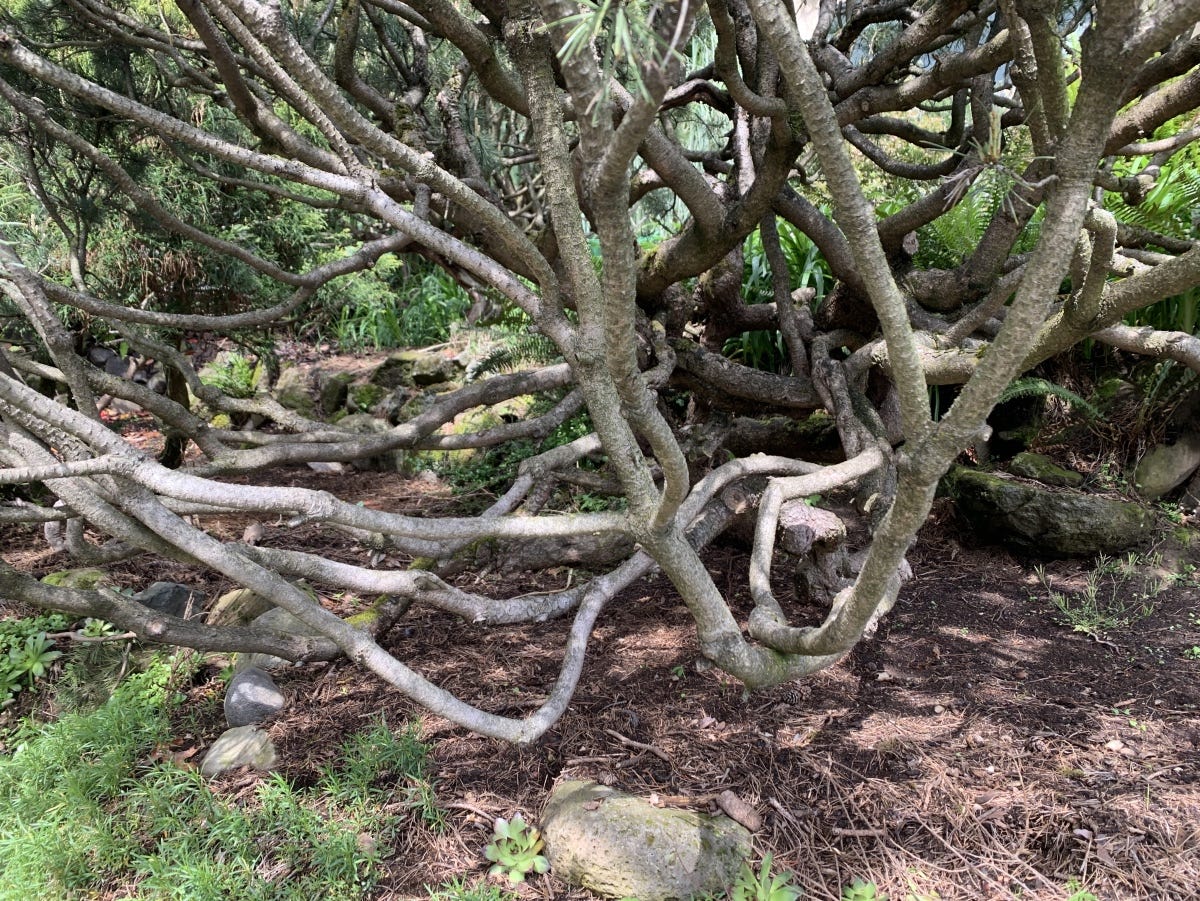When I decided to start this project, one of my goals was to skim the cream off the landscape around me. But I've been resistant to delve too far into foraging.
There are so many skilled, experienced foragers out there, Northwesterners who can plunge into the forest with waterproof boots and a knife and emerge with a 12-course feast. In the PNW Foraging Facebook group I read every day, half of the posts right now are photos of massive morel hauls. The other half are requests for plant identification. "Can I eat this thing in my lawn?" someone asks. Sometimes they'll get a recipe. Other times, they're told they're making poison hemlock salad.
My own interest is in the edible excesses of our urban landscape. Where the border between the cultivated and the wild is a convenient fiction. Where we’ve reshaped the landscape with plants from all over the world and are now confused by the consequences. Sixty years after someone plants an English walnut tree in their back yard to harvest for their family, the stranger now tending the 25-foot, nut-spitting behemoth has no idea of what to do with the bounty but rake and grumble.
The Portland food writer Jana Fay Ragsdale read my newsletter a few months ago and DMed me: Would I be interested in making syrup from her mugo pines when the trees' shoots emerged? The last owner of her house bred camellias, and decades ago, he installed a row of scrubby pines, a species that originated in the mountains of central and southern Europe. While trimming the mugo pines into shape a few years ago, she learned of the existence of mugolio.
Cultures all across the coniferous north eat the pale-green shoots and immature cones from pine, birch, fir, and hemlock trees. Some preserve them in sugar. You can find mugolio syrup from the Dolomite Alps at high-end markets and pine cone jam in Russian groceries. It's hard to imagine how old this particular tradition may be, given that cane sugar only came to Europe in bulk in the 18th century with the rise of colonialism and chattel slavery.
I called up the one person I know who might know more about the origins of mugolio: Darrell Corti, the legendary owner of the Sacramento grocery store Corti Brothers. In 2019, I spent a few days with Darrell writing a profile for the LA Times. (Sorry, paywall.) Darrell told me that the mugolio he'd tasted was not a syrup at all but a pine-shoot digestivo made by monks from the Camaldolese order in the Tuscan Apennines (answers like this are why people like me like to call Darrell). Mugolio had probably originated as a tonic, sipped in order to stimulate the salivary glands, sweetened with honey to offset the bitterness. He wasn't a fan. "It wasn't particularly exciting," he said. "You have to like that resiny note." Whether the digestivo evolved into an alcohol-free syrup, or whether the name simply migrated onto another traditional sweet, I don't know.
Mugo pines were never planted in the Northwest to harvest for their tips or cones. They’re an ornamental. They don't grow too big. Their trunks branch out in angular forks reminiscent of Egon Schiele portraits. Jana Fay and her sons have to trim the 2-inch vertical shoots and caper-sized baby cones off thousands of branches every spring to shape the shrubs' growth. The syrup she's learned to make is a reward for their labor.
We gathered about a gallon of pollen-dusted pine shoots over the course of a few hours, nibbling as we picked, talking as we gleaned. Following Jana Fay's directions, as well as the Forager Chef's, I layered the pine tips with a mix of organic and turbinado sugar in quart jars, pressing them down with fermentation weights. I set the mixture in my kitchen window to steep and ferment, and once the rains stop the jars will move outside. Right now the contents look as if I shoveled up the slush at the side of a highway in the Cascades, but in September, I'll strain out the shoots and boil the liquid to sterilize and concentrate it. I have no idea what this mugolio will taste like, nor what I'll do with it.
An unexpected reward for my own labors: noticing edible pale-green conifer tips everywhere I walk. (Um, not the toxic yew next to our driveway.) Each shoot I twist off and pop into my mouth has a different flavor. The lemony crunch of Douglas fir. The bolder resin and grapefruit of redwood. Snacking on the trees along my path doesn't feel like foraging. It's more akin to a nod in passing. The tree confirms that it's not out to kill me. I compliment it on its new year’s growth. As I wander on, fingertips sticky and fragrant, it's not hard to tell which of us has benefited most from the exchange.









LOVE your writing, Jonathan! So happy to read this, although retsina has never been a favorite.
I have spent so so much time among conifers and pines over the years and I never know you could eat them! Can't wait to learn how the syrup turns out. <3